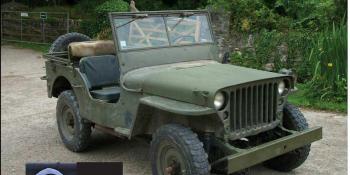Robert U’Ren shares some of his helpful fixes and tips on buying, selling, repairing and recommissioning World War Two and Hotchkiss Jeeps
Ihave spoken about 12-volt starter conversions in the past, including the problems encountered when changing a six-volt Jeep to a 12-volt to aid its starting. It has its definite advantages, as the old six-volt had very slow cranking. Sometimes it’s hard to start the engine, with the lack of compression produced by the lower cranking speed and weaker spark of the 6-volt system.
Thousands of World War Two and early post-war Jeeps all over the world have now been changed from six to 12 volts by simply fitting a 12-volt battery and changing the dynamo for a 12-volt alternator. Also, the ignition coil, the fuel tank sender and the light bulbs need to be 12 volts. The original six-volt starter is heavily built and can tolerate the extra voltage without overheating, and the original six-volt dynamo can even be retained if a 12-volt regulator is fitted. The faster cranking speed gives a vastly improved start-up.
The downside to this popular upgrade is the extra speed and torque of 12 volts pushing through the six-volt starter, which will end up damaging the flywheel ri…




